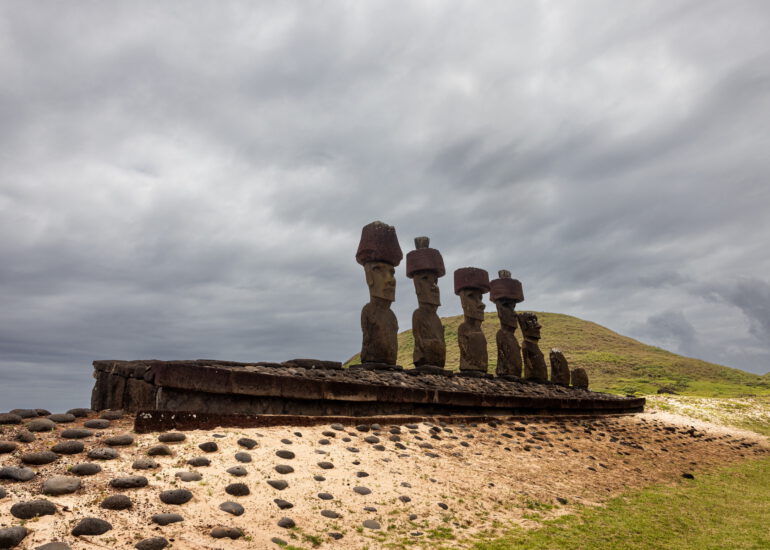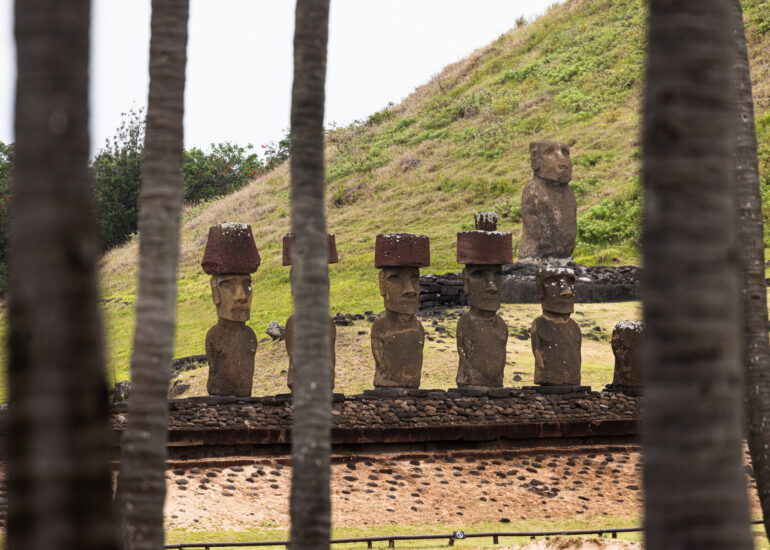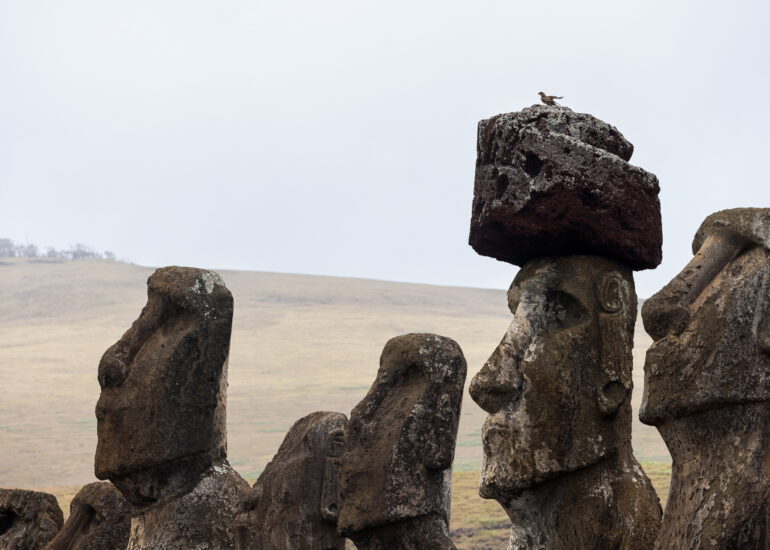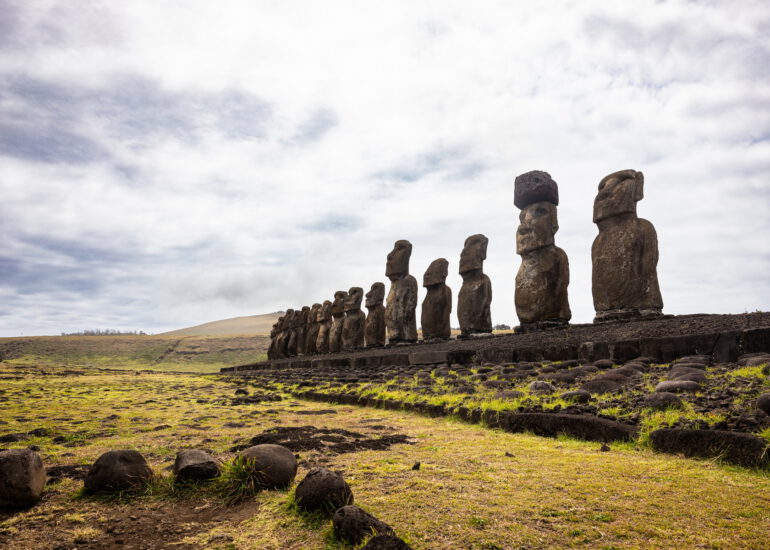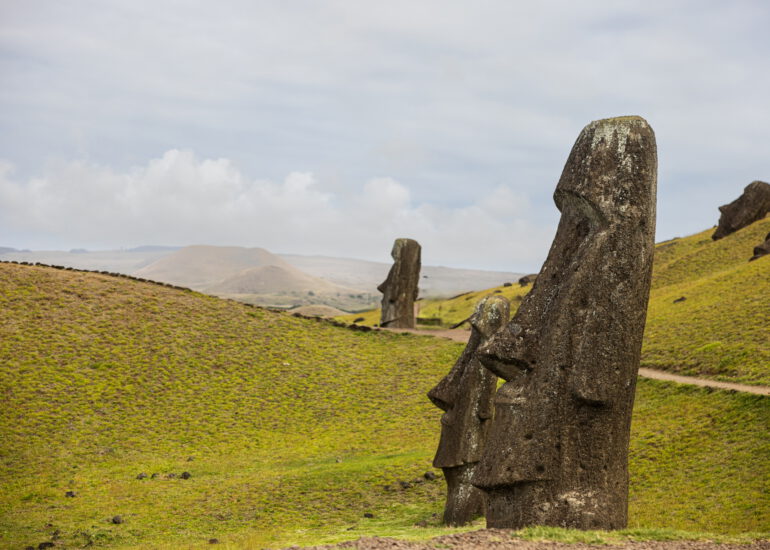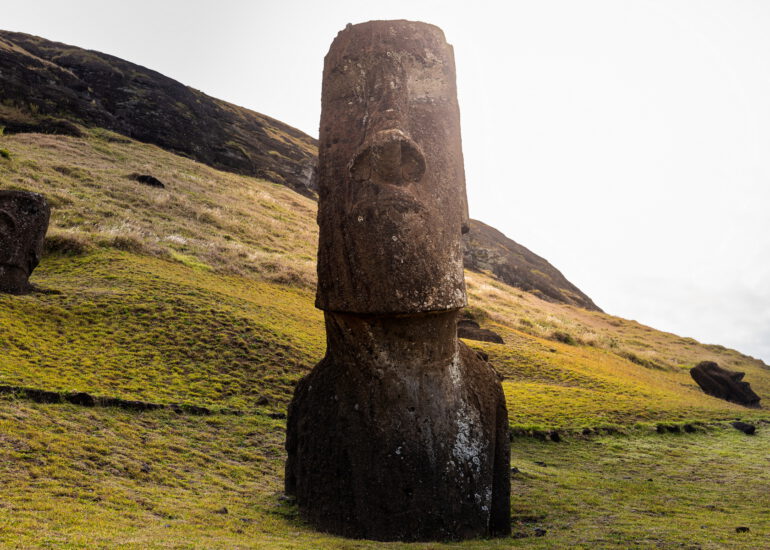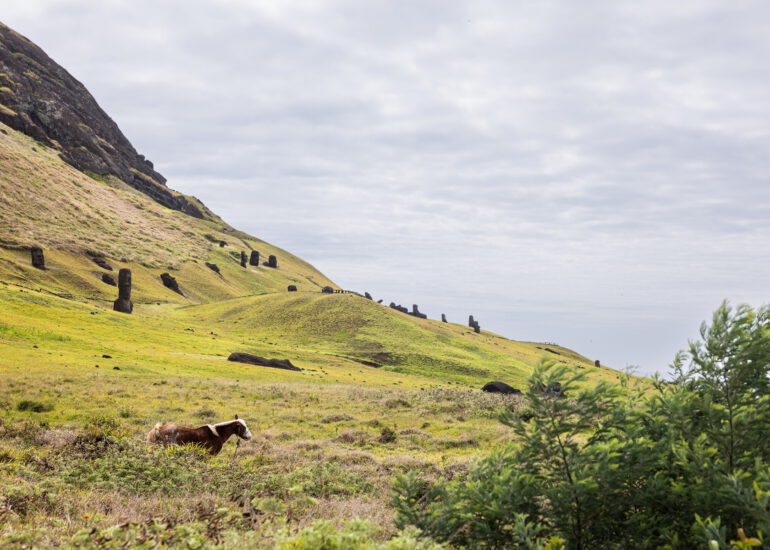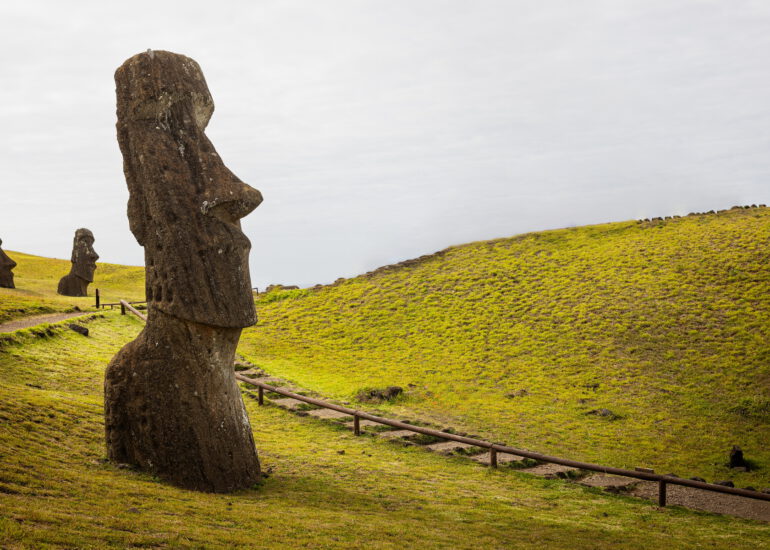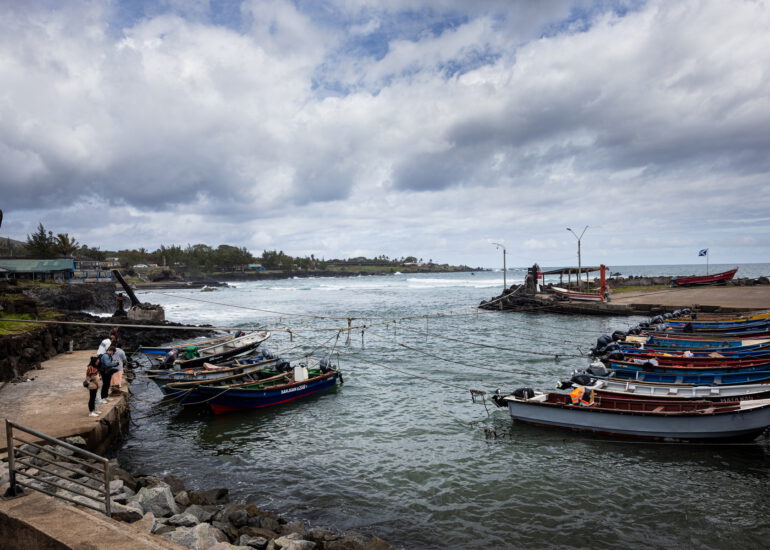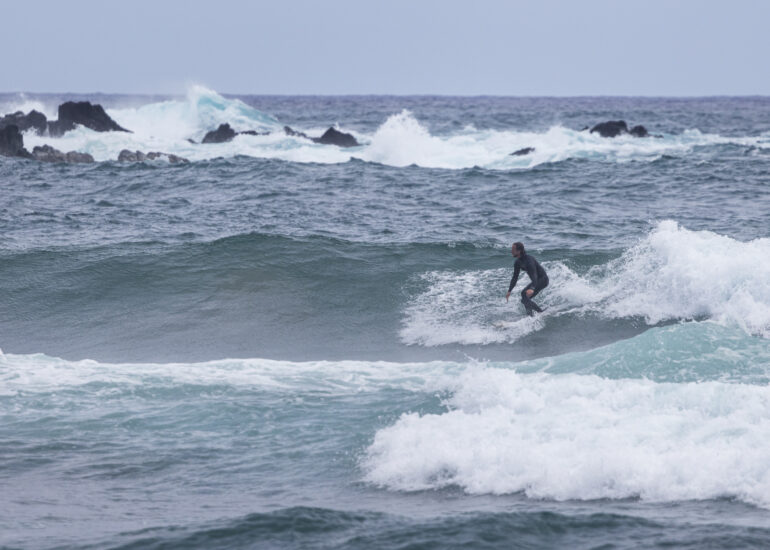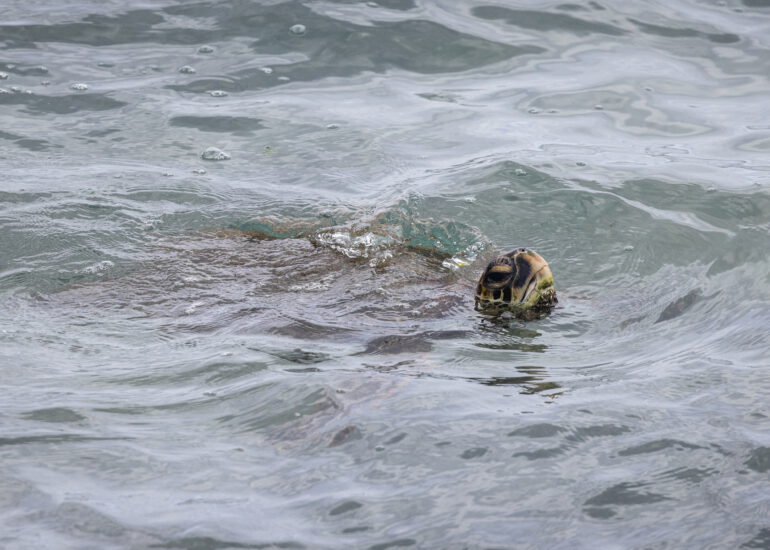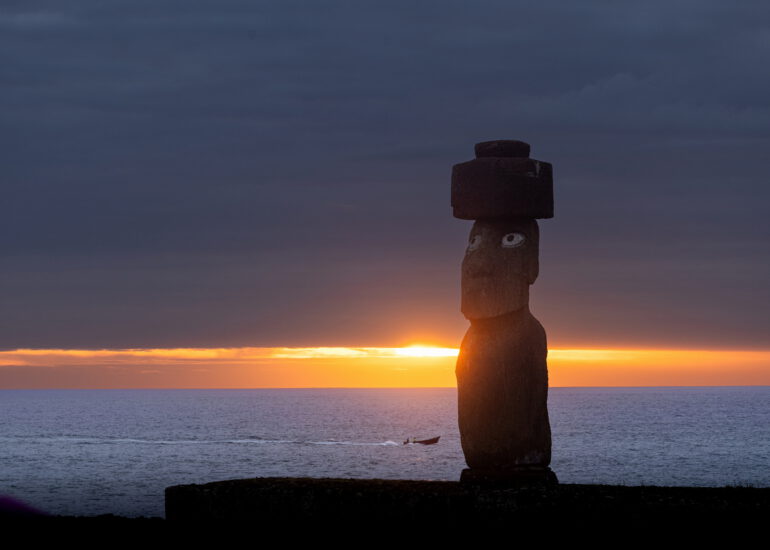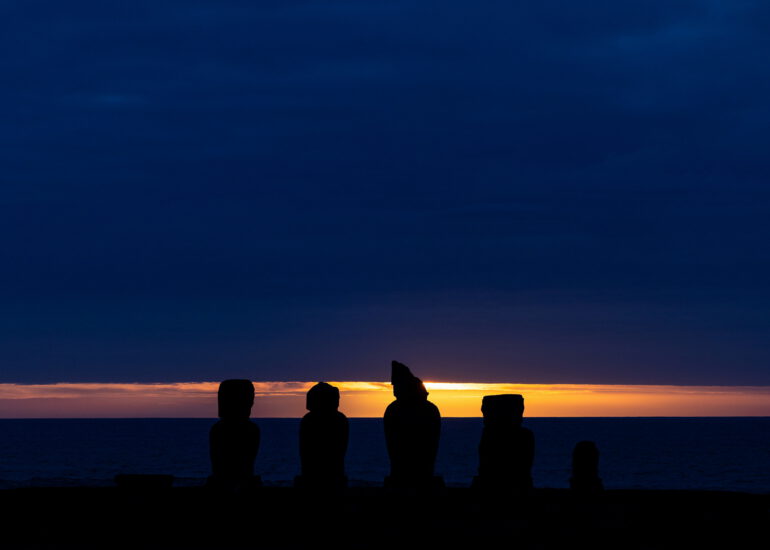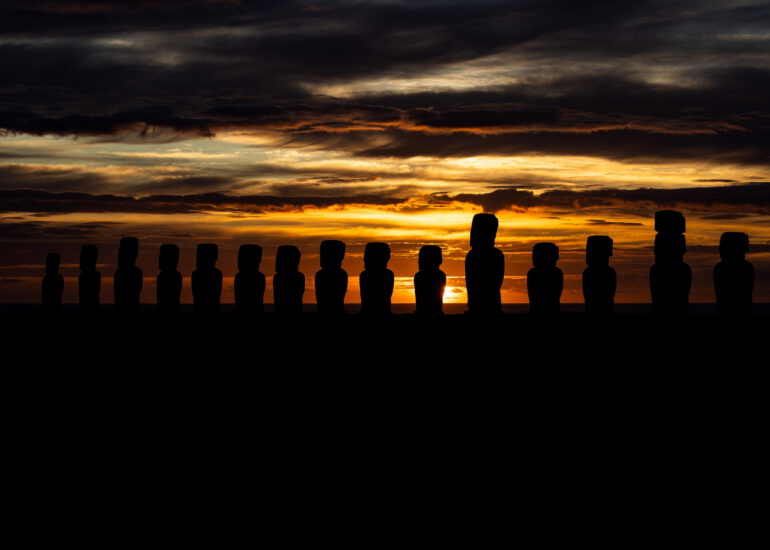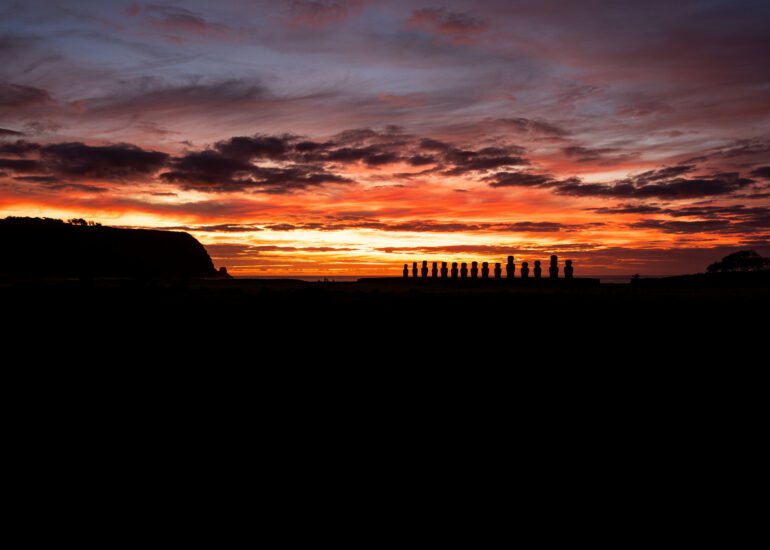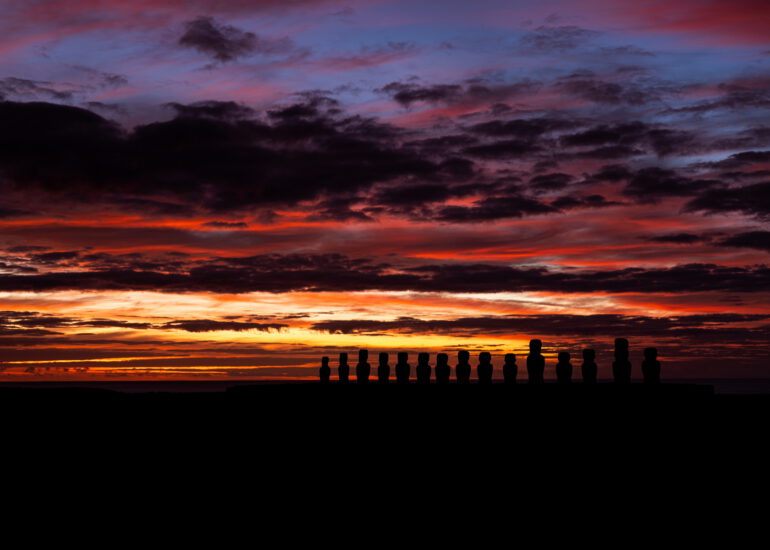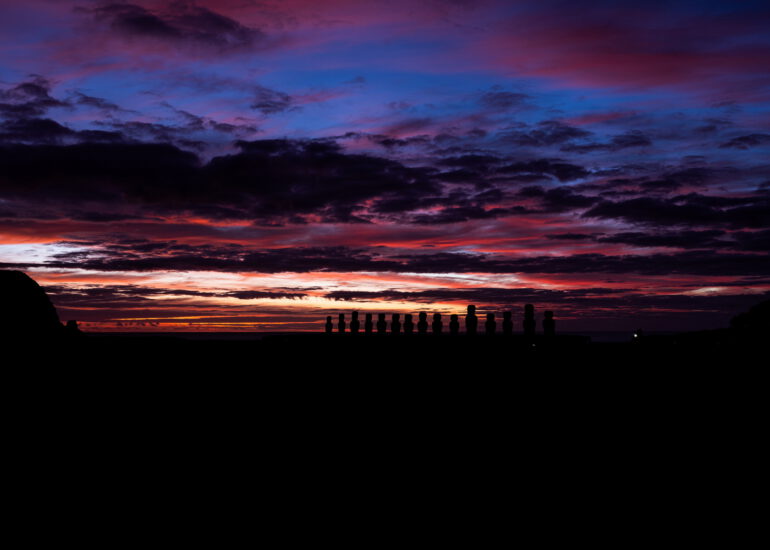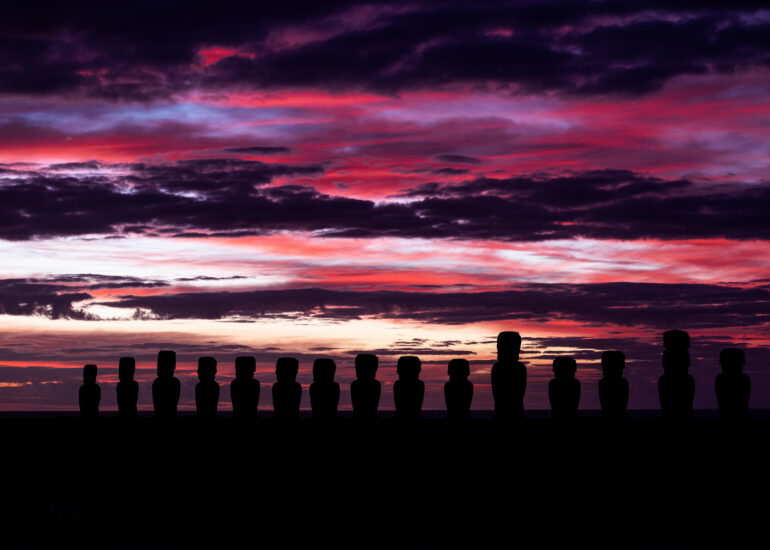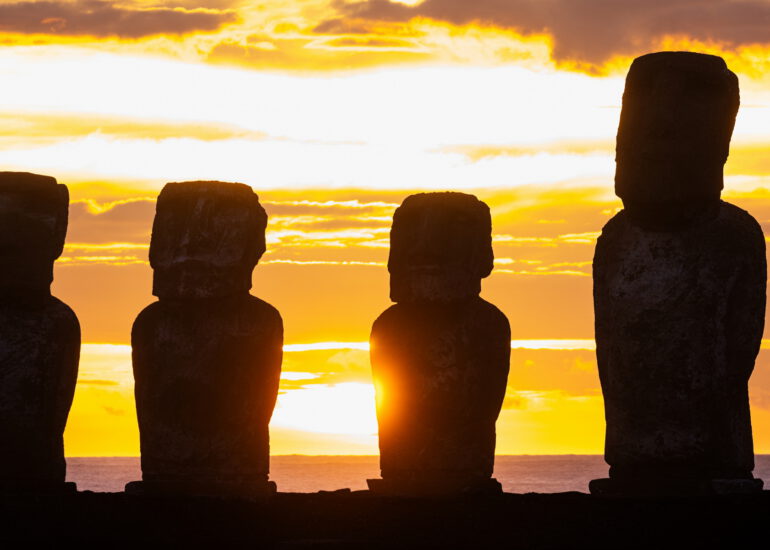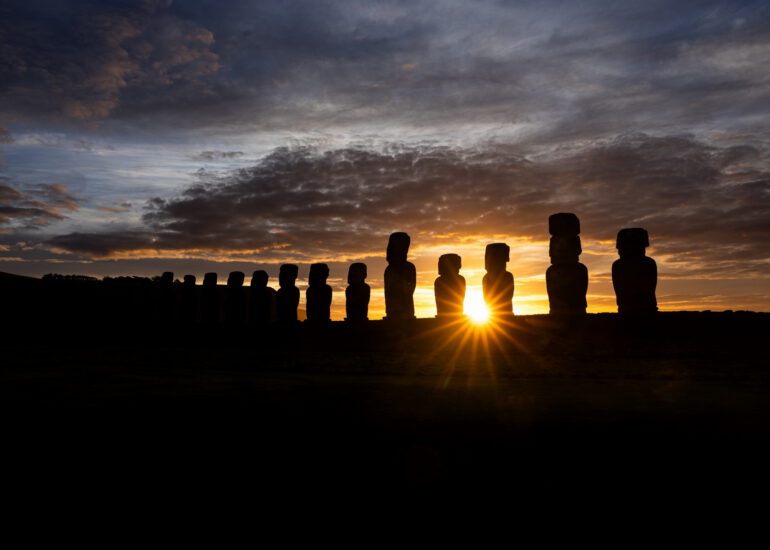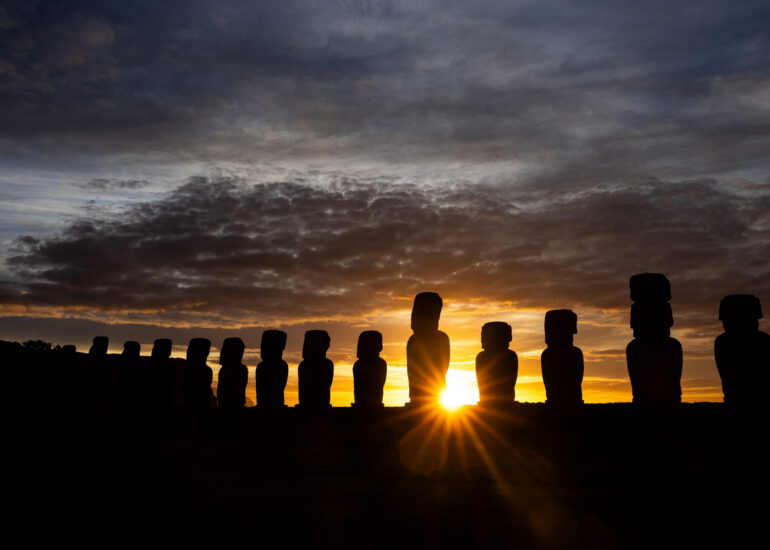Two days on Rapa Nui: A photographer’s adventure on Easter Island
Two days on Rapa Nui: A photographer’s adventure on Easter Island
Part of our journey across the South Pacific took us to an unforgettable stop on Rapa Nui, better known as Easter Island. Together with two good friends, I had the opportunity to spend a night ashore, explore the island, experience an energetic local bar and dance event, make new friends and enjoy the special moments on this fascinating island.
When I realized a few weeks ago that I would soon have the opportunity to visit Rapa Nui, I immediately started planning which photos I wanted to take there. The plan was quickly made: to photograph the imposing and historic Moai statues during sunrise and sunset and, if all goes well, even get a shot of the Milky Way at night.
The plan works: Moai at sunrise and sunset
We started with a breathtaking sunset at Ahu Tahai, where some of the famous Moai statues are located. The peaceful atmosphere and the golden colors of the sky in contrast to the historical figures were simply incredible. It felt almost surreal to have these world-famous statues so close to me.
However, the next shot – the Milky Way above the Moai – was to be more complicated. To photograph the Milky Way, you need a few prerequisites: Firstly, a dark night with no moonlight. Fortunately, we had a new moon just four days earlier, so we were off to a good start!
Then it was a matter of seeing the Milky Way at the right place at the right time. After a bit of research, it was clear: the Milky Way in the northern hemisphere would be perfectly positioned above my chosen location between 4 and 5 am, and the moon would set at 1 am. Perfect, I thought.
The challenge of the weather
The last factor was the weather. What do you need? Ideally a clear, cloudless sky. What did we get? Unfortunately, 50% cloud cover, which made it impossible to photograph the Milky Way above the Moai. It would have been too perfect! But that’s part of the adventure.
A spectacular sunrise at Ahu Tongariki
I was more than compensated for this the next morning. Ahu Tongariki, with its 15 moai in a row, offered us an absolutely breathtaking sunrise. The sight of the rising sun behind these iconic statues was a moment I will never forget.
Why is the island called Rapa Nui?
The name “Rapa Nui” comes from the Polynesian settlers who discovered the island around the year 1200 AD. Translated, it means “Great Rapa” and refers to the similarity with another island called Rapa in Polynesia, which is, however, significantly smaller. The island was later given the name “Easter Island” when the Dutch explorer Jakob Roggeveen discovered it on Easter Sunday in 1722. But for the inhabitants, Rapa Nui remains the traditional name that expresses their connection to Polynesian culture and history.
Gratitude for the experience
I am incredibly grateful for this time on Rapa Nui. The opportunity to capture this unique place through my lens, the people I was able to share these moments with and the special atmosphere of the island were a real gift. Even though the Milky Way didn’t cooperate, the experiences and photos I was able to take at Ahu Tongariki were more than enough. Take a look at the pictures and let yourself be enchanted by the magic of this place!

